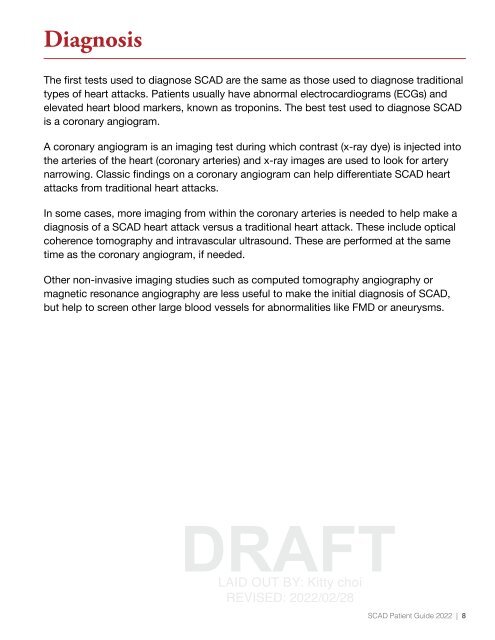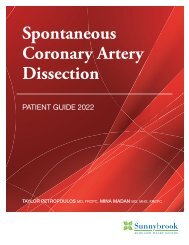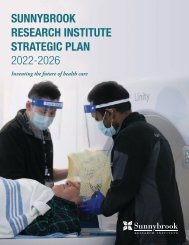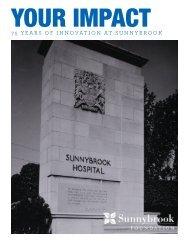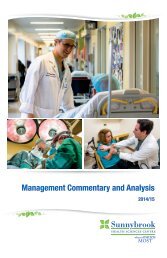Spontaneous-Coronary-Artery-Dissection
You also want an ePaper? Increase the reach of your titles
YUMPU automatically turns print PDFs into web optimized ePapers that Google loves.
Diagnosis<br />
The first tests used to diagnose SCAD are the same as those used to diagnose traditional<br />
types of heart attacks. Patients usually have abnormal electrocardiograms (ECGs) and<br />
elevated heart blood markers, known as troponins. The best test used to diagnose SCAD<br />
is a coronary angiogram.<br />
A coronary angiogram is an imaging test during which contrast (x-ray dye) is injected into<br />
the arteries of the heart (coronary arteries) and x-ray images are used to look for artery<br />
narrowing. Classic findings on a coronary angiogram can help differentiate SCAD heart<br />
attacks from traditional heart attacks.<br />
In some cases, more imaging from within the coronary arteries is needed to help make a<br />
diagnosis of a SCAD heart attack versus a traditional heart attack. These include optical<br />
coherence tomography and intravascular ultrasound. These are performed at the same<br />
time as the coronary angiogram, if needed.<br />
Other non-invasive imaging studies such as computed tomography angiography or<br />
magnetic resonance angiography are less useful to make the initial diagnosis of SCAD,<br />
but help to screen other large blood vessels for abnormalities like FMD or aneurysms.<br />
LAID OUT BY: Kitty choi<br />
REVISED: 2022/02/28<br />
SCAD Patient Guide 2022 | 8


